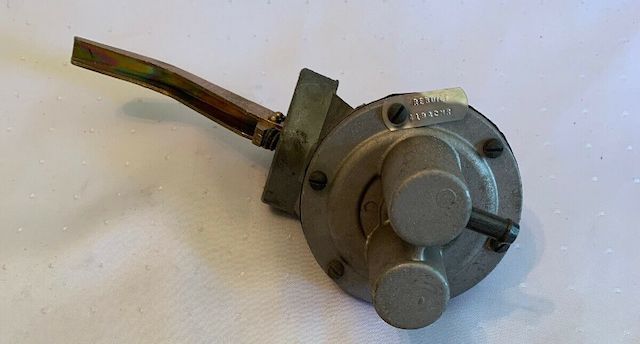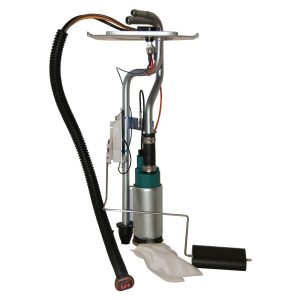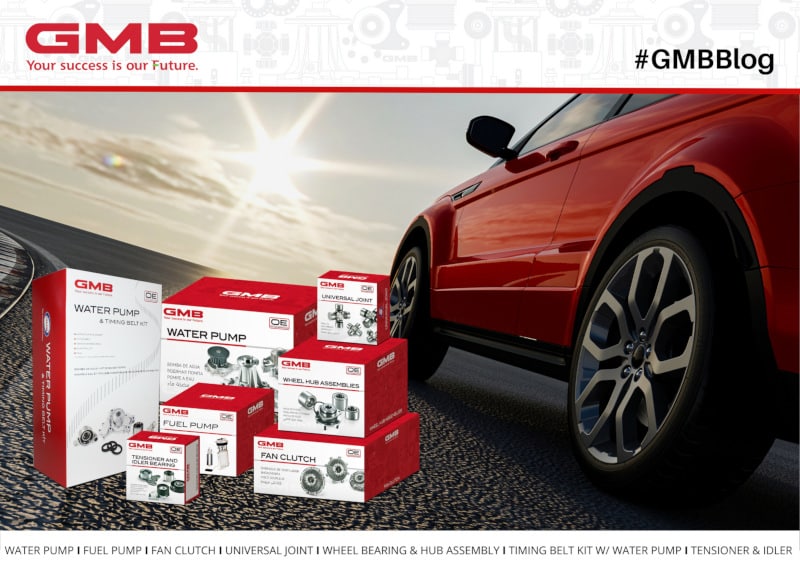Major Innovations In Fuel Pump Design Since 1900
Cars have been using fuel pumps for about a century now. The fuel pump has evolved quite a bit over the years. Here’s an overview of how the fuel pump came to be the useful part we all know today.
1900-1920s: Fuel Was Supplied To The Engine Via Gravity
The fuel pump didn’t come into the picture until a couple of decades after cars were invented. So how did they manage to pump fuel into engines during the early years? One word: gravity.

Image Credit: Victor Wilfred Pagé via Wikimedia Commons
The diagram shows that they put the fuel tank above the engine. The design allowed fuel to trickle down to the carburetor via the feed pipe. Some car owners back in the days would insert a homemade fuel filter in the feed pipe.
While this design was practical, it was also not safe. It’s dangerous to keep the fuel tank so close to the engine. If there’s a fuel leak, and if the engine is hot, a fire could occur. In fact, the term firewall dates back to the era where the fuel tank was mounted above the engine.
1920s: The Mechanical Fuel Pump Became Commonly Used In Cars

In the 1920s, automakers finally moved the fuel tank to the back of the vehicle. There was a problem, though. The design didn’t enable gravity to supply fuel to the carburetor. The solution? A mechanical fuel pump.
How Does A Mechanical Fuel Pump Work?
The design of the mechanical fuel pump did not evolve much over the years. Here’s a general overview of how mechanical fuel pumps work:
The mechanical fuel pump is bolted to the engine. Either the camshaft or the crankshaft powers it. There’s a pivoted lever near the shaft. As the shaft turns:
- A cam on the shaft causes one end of the lever to move up or down.
- A rubber diaphragm is attached to the other end of the lever. The diaphragm moves up and down with the lever.
- When the lever pulls down the diaphragm, enough suction is created to draw fuel into the pump through the fuel pipe.
- When the lever isn’t pulling down the diaphragm, a spring pushes it back.
- When there’s fuel in the pump, it can’t go back through the fuel pipe because there’s a one-way valve. So the pump can only expel the fuel in one direction: toward the carburetor.
- Considering how fast the shaft turns, this process occurs many times per minute.
Mechanical fuel pumps operate at a low pressure – about 4-6 psi. It’s enough pressure to pump fuel to the carburetor float bowl. Once the fuel is in the carburetor float bowl, gravity enables it to mix with air. The pump doesn’t continually pump fuel into the carburetor. Rather, a check valve in the carburetor allows it to draw in fuel only when it needs to.
The Pros And Cons Of Mechanical Fuel Pumps
Overall, mechanical fuel pumps are:
- Simple
- Reliable
- The perfect solution for carbureted engines
That being said, mechanical fuel pumps have a major con. They’re located in the engine compartment, so the fuel line between the tank and the pump is susceptible to vapor lock. This occurs when fuel turns into vapor before it reaches the pump. This can happen when there’s excessive heat from:
- The engine
- The exhaust system
- Outside
When the fuel vaporizes in the lines, you’ll experience:
- Loss of power
- Stalling
- Difficulty restarting the engine
The Late 1960s: Electric Fuel Pumps Became Common

In 1925, a Swedish engineer named Jonas Hesselman invented the concept of fuel injection. The technology didn’t catch on until the late 60s, though. Prior to the late 60’s and early 70’s:
- Fuel injection systems were more expensive than carbureted fuel systems.
- Fuel injection wasn’t needed to increase the performance of engines. Other methods were cheaper.
- Emissions standards were lax or non-existent.
- Gasoline was cheap, so fuel economy didn’t matter.
Of course, all this changed in the 70’s. Automakers adopted fuel injection technology to address the changing market. Electric fuel pumps were implemented because they better met the needs of fuel injection systems. Electric fuel pumps can create much more pressure than traditional mechanical fuel pumps. They usually operate at about 60 psi. That’s enough pressure to atomize the fuel when it’s injected into the cylinders.
How Does An Electric Fuel Pump Work?
On most vehicles, you’ll find the electric fuel pump in the fuel tank. For that reason, the camshaft obviously does not power it. The vehicle’s electrical system powers it. A solenoid actuates the diaphragm. This draws the fuel into the pump. Next, the pump sends the fuel down the fuel line to the fuel injectors.
Some electric fuel pumps remain on the whole time the ignition is on. Other electric fuel pumps are switched on by the ECU whenever the engine needs fuel.
Many people wonder if it’s safe for electric fuel pumps to be submerged in gasoline. It’s absolutely safe. Liquid gasoline is a hydrocarbon, and hydrocarbons do not conduct electricity. In fact, gasoline helps keep the fuel pump cooler, so it’s better to keep your tank more than half full at all times.
The Pros And Cons Of Electric Fuel Pumps
Here are some pros of electric fuel pumps:
- Electric fuel pumps are simple and reliable.
- Vapor lock cannot occur with electric fuel pumps.
- It’s because electric fuel pumps pressurize the fuel line from the tank to the engine.
Now, let’s talk about some of the cons of electric fuel pumps:
- Electric fuel pumps can be very hard to replace.
- To replace a failed electric fuel pump, you have to drain and remove the fuel tank.
- Sometimes electric fuel pumps do not have effective filters.
- There’s no way to easily change the filter. So the filters that come in electric fuel pumps are typically simple screens.
- Electric fuel pumps can be sensitive to sediment or rust in the fuel.
- Heat can cut the lifespan of an electric fuel pump.
- When the tank is low on fuel, the pump won’t be fully submerged, so it won’t be cooled by the fuel around it.
- When the engine is at less than full power, it doesn’t need all the fuel that the pump provides. The unused fuel is returned to the fuel tank. But, the trip to the engine compartment causes the fuel to get warmer.
- Heat from the above situations can ruin the electric fuel pump.
Mid 1990s: Almost All Vehicles Used Electric Fuel Pumps
After fuel injection caught on in the late 60s, it became increasingly popular over the years. By the time the mid 1990s rolled around, almost all vehicles had fuel injection system. That means virtually all vehicles had an electric fuel pump, and mechanical fuel pumps are now obsolete on production automobiles.
MORE CONTENT
Stay current!
Sign up here to get the latest news
and updates on all things GMB.
Sign Up To Receive GMB News & Updates!

